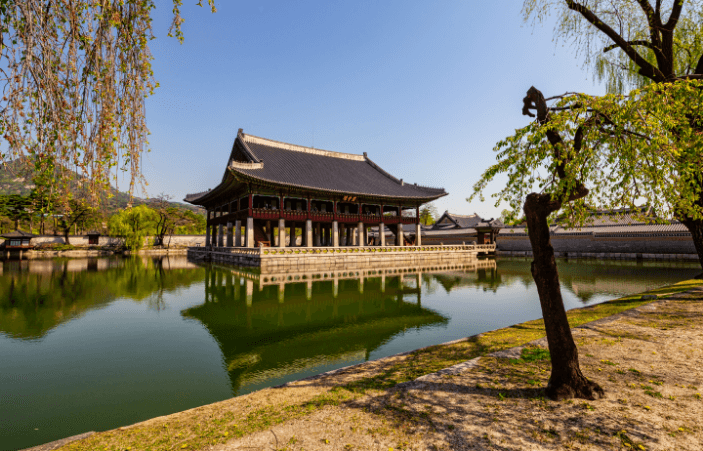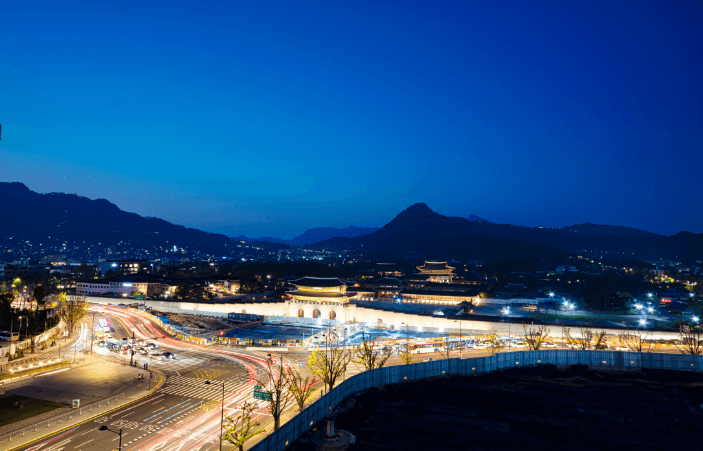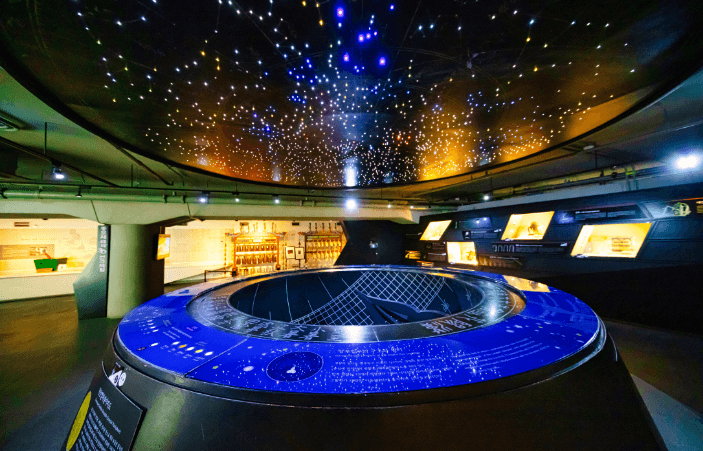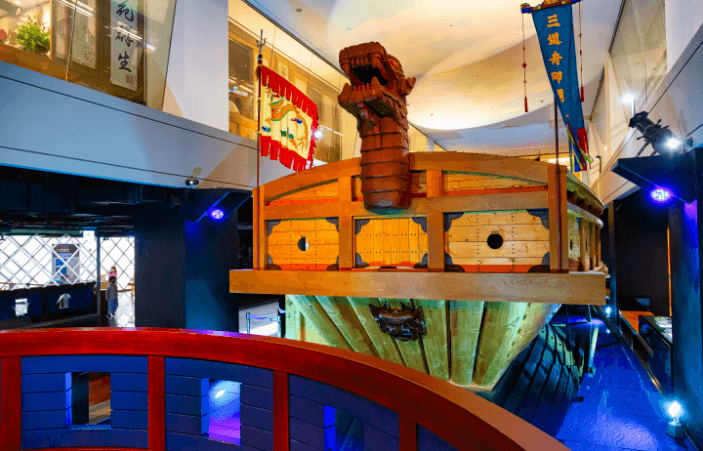The area around Gwanghwamun is a historical nexus with traces of 600 years of history amidst modern skyscrapers. With several main palaces in proximity, ”it is delightful to explore each palace and compare their distinct charms. Follow the trail of the Joseon dynasty by walking alongside the walls of Gyeongbokgung, passing through Gwanghwamun to Deoksugung Palace, and then walking from the stone wall of Deoksugung Palace to Seoul Museum of Art and witnessing the seamless blend of modern and historical eras. How about a walk along these culturally rich pathways?
* Walking Standard

Once the heart of the Joseon dynasty, Gyeongbokgung Palace now stands proud in the bustling center of Seoul and has a variety of attractions. When visitors enter the palace grounds, they are greeted by Geunjeongjeon, where significant ceremonies were held, followed by Sajeongjeon, the central executive office, the king's sleeping quarters, Gangnyeongjeon, and the queen's chambers, Gyotaejeon. The elegant Gyeonghoeru Pavilion is set against a picturesque pond backdrop, and the Hyangwonjeong garden presents unique viewing pleasures.
A highlight for many visitors is the daily guard changing and Gwanghwamun sentry ceremonies, along with the guards' public training sessions, which are held twice daily in the morning and afternoon. The palace also offers various experiences, such as the Saeng-Gwabang experience, nighttime openings, special tours of Gyeonghoeru, and stargazing night walks.
- Address 161 Sajik-ro, Jongno-gu, Seoul
- Inquiry 02-3700-3900
If you walk along the wall of Gyeongbokgung Palace you will arrive at the main gate, Gwanghwamun, once frequented by kings. Among the five main palaces of the Joseon Dynasty, Gwanghwamun is distinctively designed as a palace gate and emanates grandeur and majesty.
Gwanghwamun is the gatekeeper that protects Gyeongbokgung Palace and takes tourists to the plaza through its five-arch bridge. The tranquil scenery of the palace is juxtaposed with modern skyscrapers to create a unique ambiance.
Gwanghwamun, is often the start or the endpoint of the journey for visitors in the vicinity. Gwanghwamun stands at the heart of Seoul with its wonderful landscape.
- Address 161 Sajik-ro, Jongno-gu, Seoul
- Inquiry 02-3700-3901
Gwanghwamun Square requires no lengthy introduction. It is the first place that comes to mind as an excellent place for a stroll and a rest area tranquil haven in downtown Seoul. It is a cultural plaza that connects the past and the future and provides a comfortable resting place for locals and international tourists alike.
Passing the vast grassy area that is symbolic of the six main ministries of the Joseon era, ”you will encounter the iconic statue of King Sejong. ”There is no shortage of attractions with features such as the Pine Garden, Garden of Time, Four Seasons Garden, Cultural Resting Place, Open Square, and Plaza Forest. Furthermore, there are facilities such as information desks, restrooms, lounges for children, nursing rooms, vending machines, and drinking fountains for a pleasant stroll.
- Address 172 Sejongdae-ro, Jongno-gu, Seoul
- Inquiry 02-120
In contrast to the opulence of Gyeongbokgung Palace, Deoksugung is marked by a restrained elegance. A short walk from Gwanghwamun Square will take you to Daehanmun, the main gate. The harmony of the palace with western-style architecture from the Great Han Empire offers a unique allure.
While a simple tour of Deoksugung is delightful, we recommended booking a visit to Seokjojeon in advance. Seokjojeon was built in the Neoclassical style of the 19th century, and is where foreign dignitaries were received. Its interior features Rococo-style decor. The three-story building underwent restoration in 2009 and opened as the Seokjojeon Hall Museum of the Great Han Empire in 2014.
- Address 99 Sejongdae-ro, Jung-gu, Seoul
- Inquiry 02-771-9951
There was once a superstition that couples who walked on the Deoksugung Stonewall Walkway would break up. This was because the path once led to Seoul Family Court, which divorcing spouses inevitably had to pass. However, that legend has since faded into history.
The walkway, stretching about 1 km along the walls of Deoksugung Palace, has been transformed into a serene avenue bustling with arts and culture. Street artists painting, musicians passionately playing despite throngs of passersby, and magicians bringing whimsical fantasies to life all contribute to the charm of the Deoksugung Stonewall Walkway. Imagine yourself as a street artist amidst the artistic vibe while listening to distant melodies.
- Deoksugung-gil, Jung-gu, Seoul
- Car-free street hours Weekdays 11:00 a.m. - 2:00 p.m., Saturdays 10:00 a.m. - 6:00 p.m., Sundays 12:00 p.m. - 6:00 p.m.
The romance of the Deoksugung Stonewall Walkway extends to the Seoul Museum of Art. Located along Jeongdong-gil, the museum exudes an aura of refinement and elegance. This ambiance owes much to its unusual architecture; the museum was originally built in a Renaissance style and maintains the façade of a court building while adding modern architectural elements. This unique atmosphere, combined with the photo zone at the entrance and artfully designed pathways, attracts photographers, especially on clear days.
The museum is lures visitors to its gates with the promise of a multitude of free exhibitions. Moreover, it presents special exhibitions that blend expertise and popular appeal, so that visitors can enjoy both a leisurely walk and art appreciation. For a richer experience, visitors can use the Seoul Museum of Art's docent app to listen to guided exhibition explanations.
- Address 61 Deoksugung-gil, Jung-gu, Seoul
- Inquiry 02-2124-8800

한국관광공사가 창작한 본 저작물은 공공누리 제4유형 조건에 따라 이용이 가능합니다.
한국관광공사에 의해 창작된 [청와대 코스 ⑩] 발걸음마다 문화가 묻어나는 궁궐산책 코스은 공공라이선스에 따라 이용할 수 있습니다. 사진 자료의 경우, 피사체에 대한 명예훼손 및 인격권 침해 등 일반 정서에 반하는 용도의 사용 및 기업 CI, BI로의 이용을 금지하며, 상기 지침을 준수하지 않음으로 인해 발생하는 이용자와 제3자간 분쟁에 대해서 한국관광공사는 책임을 지지 않습니다.
















